He’s a Fort Worth cop. But this Cowboy of Color’s true love is in the rodeo spotlight
Stephen Robinson knew growing up that there were two things he wanted to do: tame calves and catch criminals.
In both instances, the slightest hesitation can be costly — to his pocketbook, or perhaps even his life — so it pays to be good at each.
Robinson, 37, is an officer in the Fort Worth Police Department and a tie-down roper competing in rodeos most weekends. On Monday, he’ll be among the field of contestants in the Cowboys of Color Rodeo at Dickies Arena as part of the Fort Worth Stock Show & Rodeo.
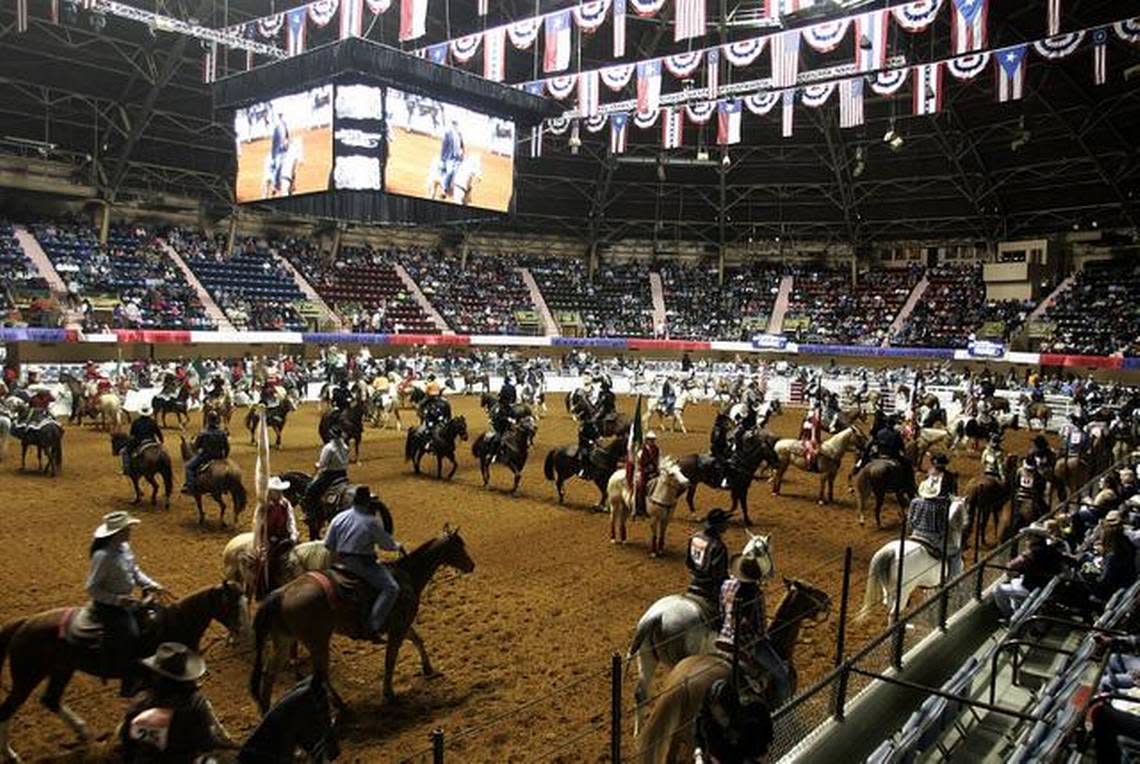
“My godfather is heavy involved in horses. He taught me a lot about horsemanship. My godsister competed in barrel racing. I used to go with them to the rodeos and watch them compete,” Robinson said. “While at the rodeos, he would introduce me to other cowboys from Fort Worth. Those cowboys took me under their wing and began helping me learn how to calf rope. After calf roping once, I was hooked for life.”
As for the law enforcement part of his life, Robinson’s mother worked in the federal prison system. After watching and learning from her, he opted to follow in her footsteps.
He worked as a jailer in Johnson County for several years, then he decided to become a certified police officer and has now been with the FWPD for six years.
“I wanted to be out among the people,” he said.
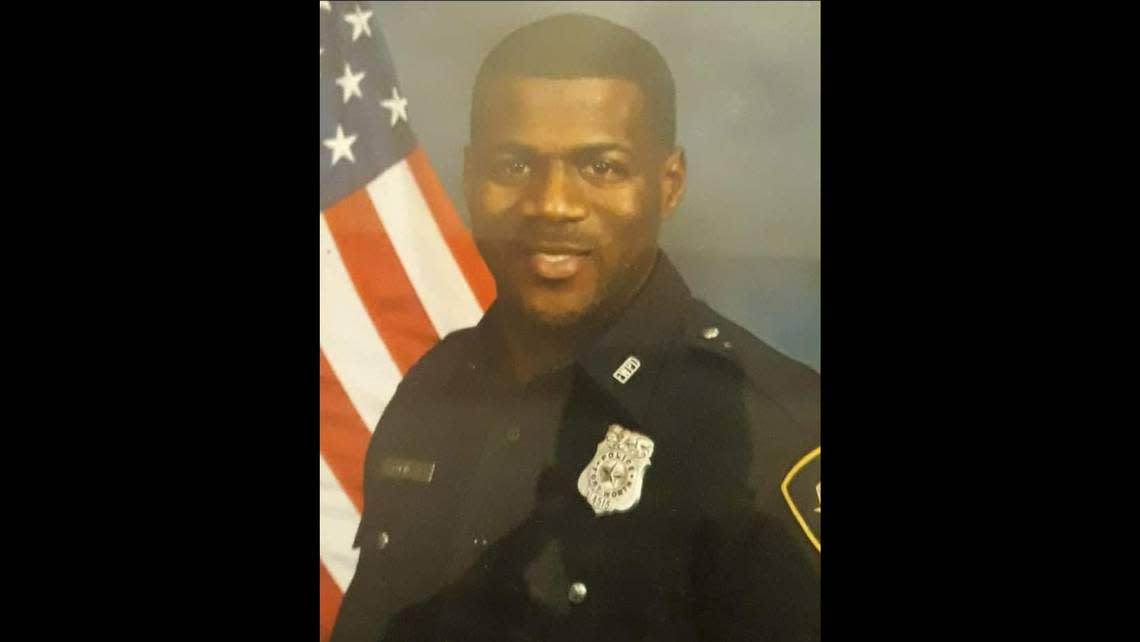
He also knew from an early age that he wanted to be in the same rodeo spotlight he saw others in. As a youngster, he was mesmerized watching the National Finals Rodeo and all its glory, especially the roping events.
“They’d have the music going, you’re back in the box getting revved up, the whole arena would be on their feet,” he reminisced. “You get the most reaction out of that event.”
Wendell Hearn is one of the producers of the Cowboys of Color, which was founded by his father, Cleo Hearn, the first black man to win a major stock show tie-down calf roping event, the 1970 National Western in Denver.
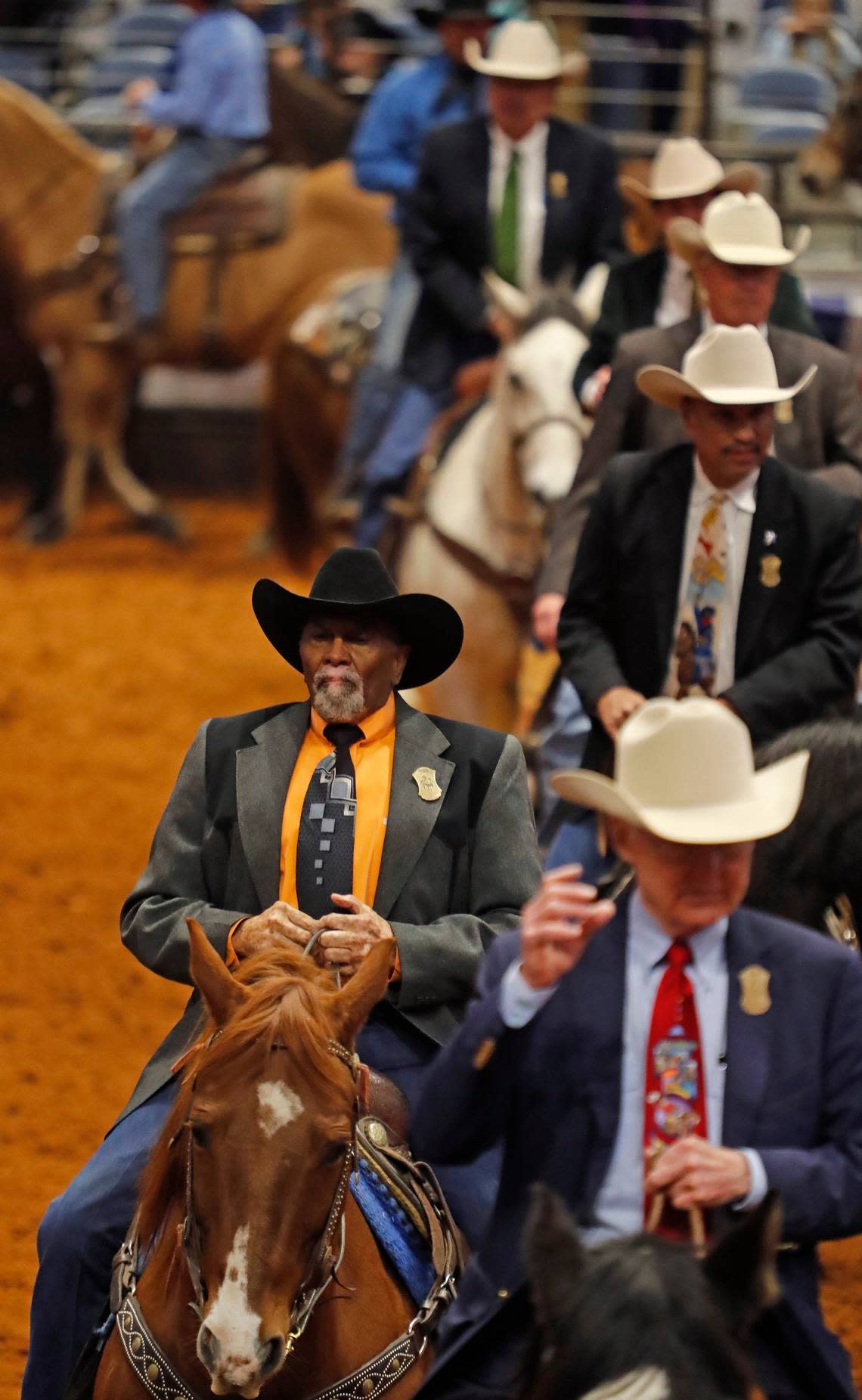
Cleo Hearn produced his first black rodeo in Texas in 1985, later changing the name to Cowboys of Color in 1995 to be more inclusive of all races.
Of Robinson, Wendell Hearn said, “As a competitor, I’ve seen him grow up and put in all the hard work it takes to become a better roper. I’ve seen him do the same thing on the police force. He’s a good example of what happens when you put the work in and are determined.”
History of success
Robinson started competing in rodeo when he was about 15 years old. In a little over two decades, he’s enjoyed success from the high school level to the professional level, including numerous wins on the Cowboys of Color circuit.
As a senior at O.D. Wyatt High School in 2005, he reached the North Texas High School Rodeo Association finals and won with a tied calf in eight seconds. He then competed for a year at Weatherford College, one of the nation’s elite programs.
As a pro, he’s won and placed in several Professional Rodeo Cowboys Association competitions, including locally in Mesquite, Cleburne, Weatherford, Stephenville and Denton. He’s also traveled to competitions and had success in rodeos, such as Longview, Athens and Durant, Oklahoma.
And he has gone to almost all of the Cowboys of Color rodeos over the years, traveling to Oklahoma City, Houston, San Antonio, Austin and Tulsa.
“It’s very important in my eyes, because most of the rodeos you see on TV have predominantly white contestants. It’s very cool to see fans’ eyes when they realize there are lots of different races of contestants that actually rodeo,” he said.
Wendell Hearn added that while the Cowboys of Color events aren’t part of the PRCA, it takes a lot of talent to be successful in them.
“He’s good, very good, and he’s doing this against really good competition,” he said. “We take the better guys, not just anybody.”
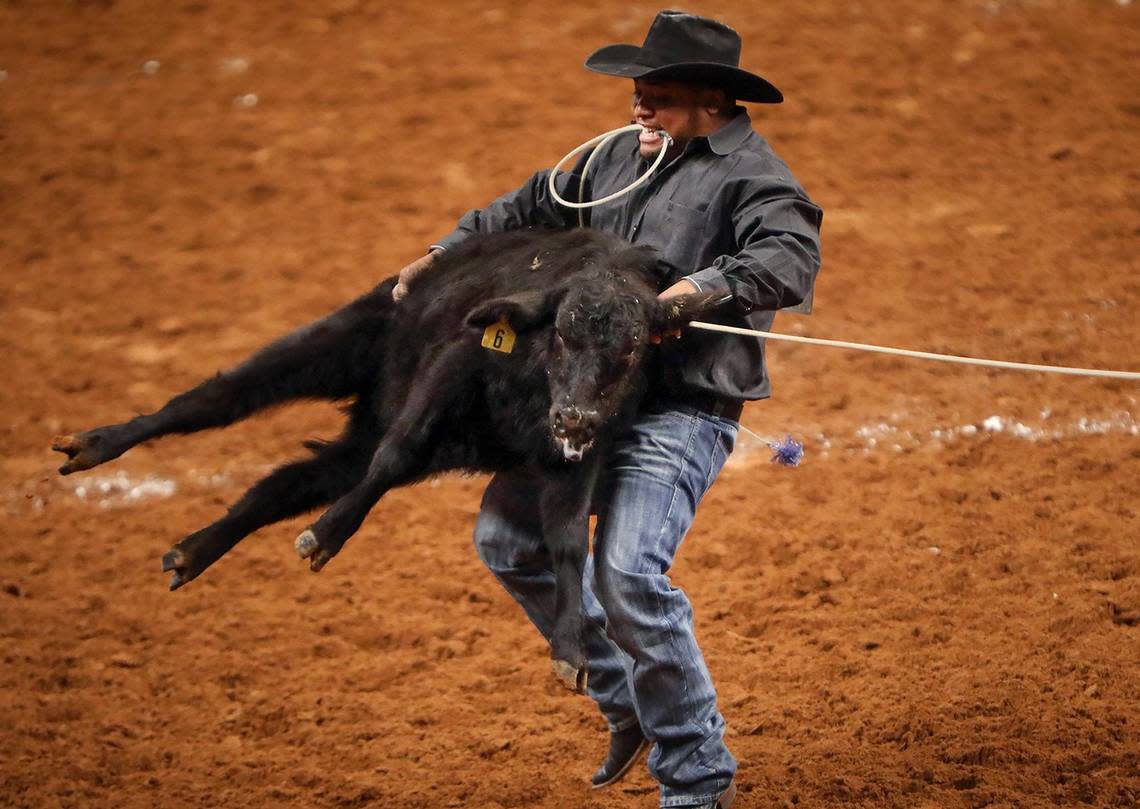
Excitement and danger
Robinson said he loves roping because of how fast-paced the event is. In less time than the fastest eye can blink, the calf is out of the chute and he must throw his rope, jump off the horse and tie the calf.
“When it works out, it’s like art. When you make it work, it’s the most fantastic feeling,” he said.
With that excitement, however, comes an element of danger. While most folks think of bull and bronc riding as the greatest opportunity, and they probably are, a competitor can get hurt in roping as well, Robinson noted.
For example, a rope coiled around a leg can result in a broken bone. Even stepping off the horse wrong to complete the roping can bring about a torn ACL.
“I saw a guy have a rope get wrapped around his finger and snap it off,” Robinson said.
And yes, he’s experienced a scare or two of his own.
“I had a rope break and it slapped me across the face,” he said. “You catch it in the eye, and that eye is gone.”
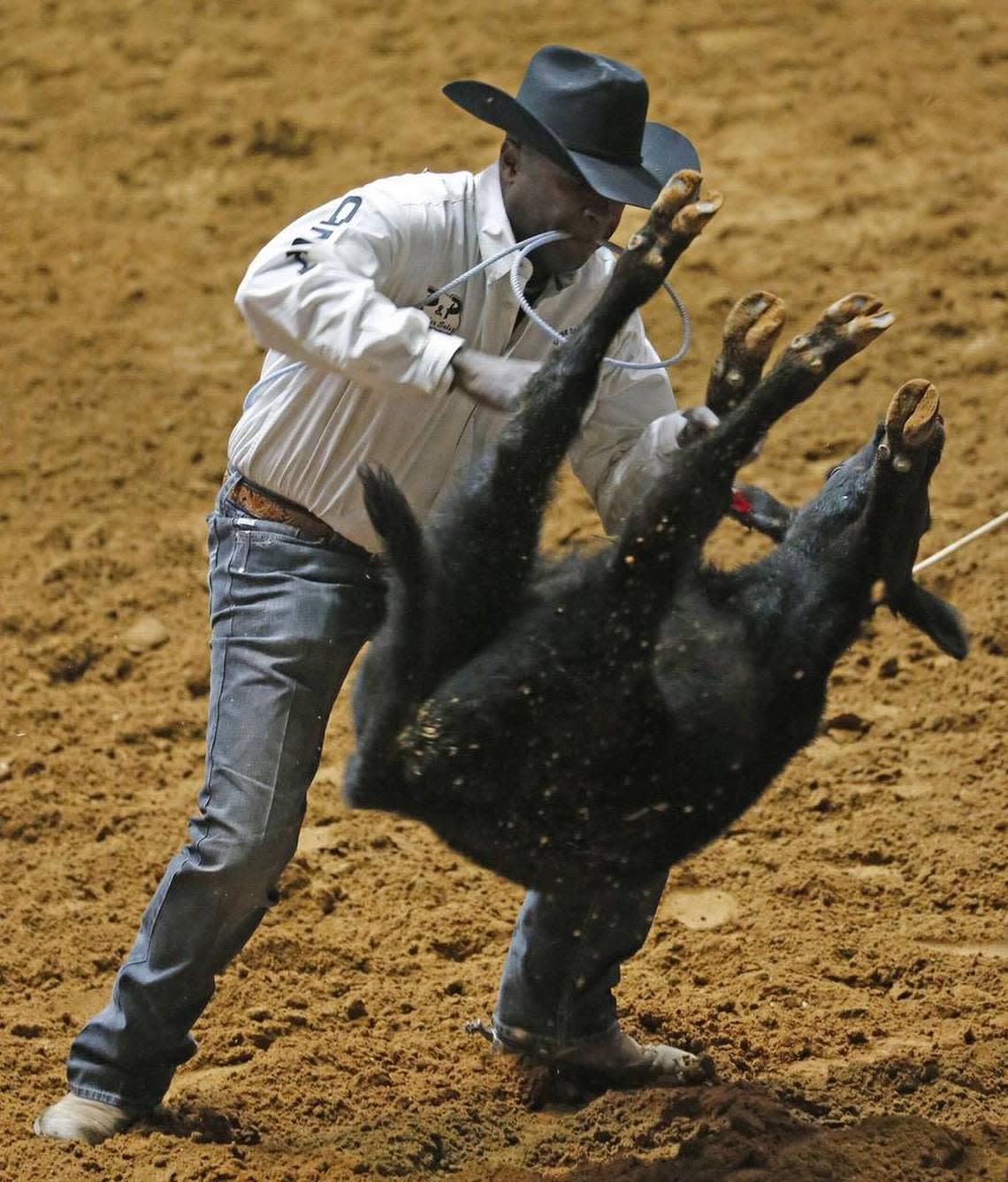
Taking it to the people
Both of his jobs require discipline to succeed. But another crossover element is the opportunity to use rodeo to connect with the public he is serving in a time when police officers can use as much positive spotlight as they can find.
Texas rodeo is right up there with football in popularity. When folks find out he competes, Robinson said, it breaks down a barrier.
“I talk to people about rodeo all the time. I used to be a school resource officer, and every time I’d get a chance I’d talk to young people about it,” he said. “It’s a good way to get them to step outside what they see every day.”
“I tell people, ‘I bet you don’t know I ride horses, I rodeo, I drive a dually truck. I wear cowboy boots. I really like the idea of the community being able to see me outside of being a police officer, and seeing that I am more than just a police officer.”
He’s also apparently making an impression on his 2-year-old son, Ace.
In many ways, Ace is a young spittin’ image of his father, and one has to think slinging a rope just might be in his future.
“He loves riding horses, wearing a cowboy hat and cowboy boots,” Robinson said. “I don’t know if he’s going to follow in dad’s footsteps, but he’s off to a good start if he wants to.”
